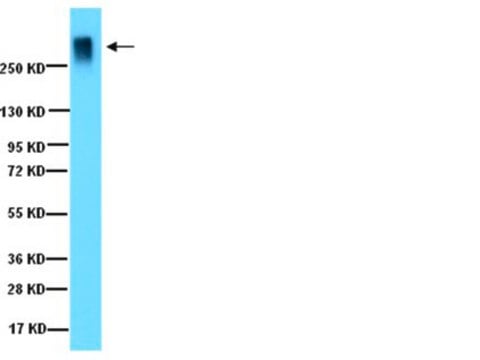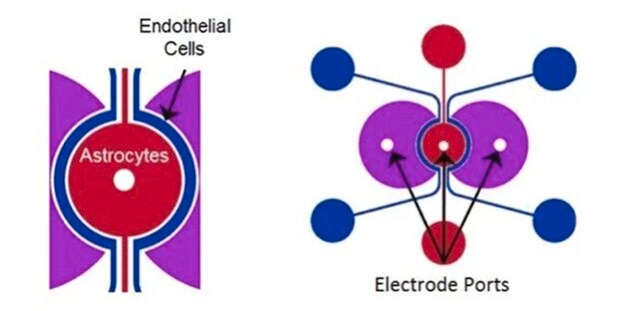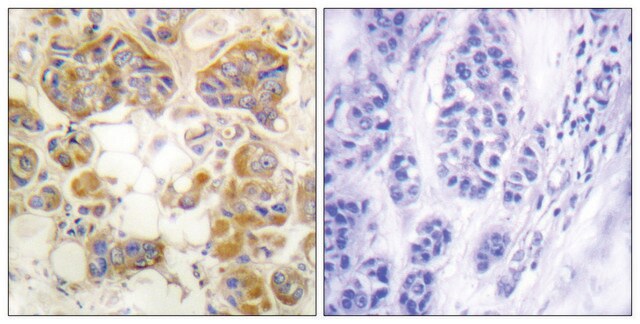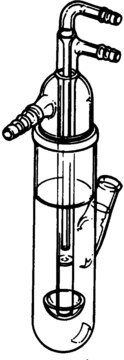ABT1373M
Anti-Aggrecan
serum, from rabbit
Sinónimos:
Aggrecan core protein, Cartilage-specific proteoglycan core protein, CSPCP
About This Item
Productos recomendados
origen biológico
rabbit
Nivel de calidad
forma del anticuerpo
serum
tipo de anticuerpo
primary antibodies
clon
polyclonal
reactividad de especies
rat
envase
antibody small pack of 25 μL
técnicas
immunohistochemistry (formalin-fixed, paraffin-embedded sections): suitable
radioimmunoassay: suitable
western blot: suitable
isotipo
IgG
Nº de acceso NCBI
Nº de acceso UniProt
modificación del objetivo postraduccional
unmodified
Información sobre el gen
rat ... Ncan(58982)
Descripción general
Especificidad
Inmunógeno
Aplicación
Immunohistochemistry Analysis: A representative lot detected Aggrecan in Embryonic day 16 rat eye, P0, P9 and adult rat retina (Popp, S., et. al. (2004). Exp Eye Res. 79(3):351-6) and Embryonic day 16, 19 rat brain and postnatal day 7 cerebellum, embryonic day 19 spinal cord (Popp, S., et. al. (2003). Dev Dyn. 227(1):143-9).
Western Blotting Analysis: A representative lot detected Aggrecan in purified proteoglycans from a PBS extract of 7-day rat brain with chondroitinase ABC treatment (Popp, S., et. al. (2003). Dev Dyn. 227(1):143-9).
Cell Structure
Calidad
Immunohistochemistry Analysis: A 1:250 dilution of this antibody detected Aggrecan in rat retina tissue.
Descripción de destino
Forma física
Almacenamiento y estabilidad
Otras notas
Cláusula de descargo de responsabilidad
¿No encuentra el producto adecuado?
Pruebe nuestro Herramienta de selección de productos.
Código de clase de almacenamiento
10 - Combustible liquids
Clase de riesgo para el agua (WGK)
WGK 1
Certificados de análisis (COA)
Busque Certificados de análisis (COA) introduciendo el número de lote del producto. Los números de lote se encuentran en la etiqueta del producto después de las palabras «Lot» o «Batch»
¿Ya tiene este producto?
Encuentre la documentación para los productos que ha comprado recientemente en la Biblioteca de documentos.
Nuestro equipo de científicos tiene experiencia en todas las áreas de investigación: Ciencias de la vida, Ciencia de los materiales, Síntesis química, Cromatografía, Analítica y muchas otras.
Póngase en contacto con el Servicio técnico






